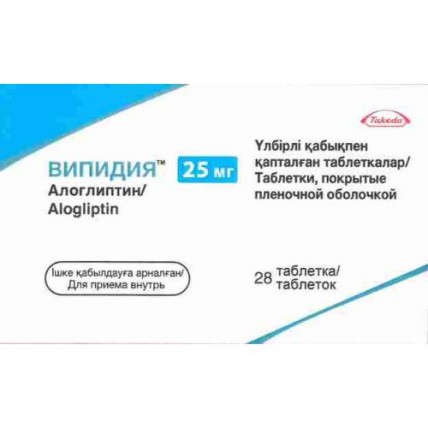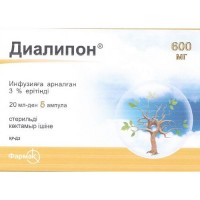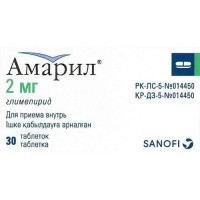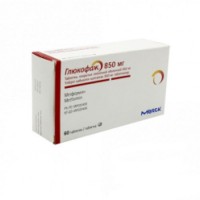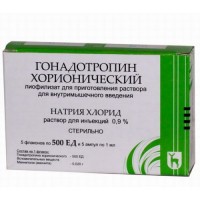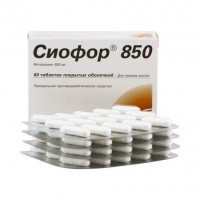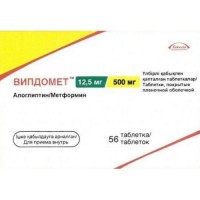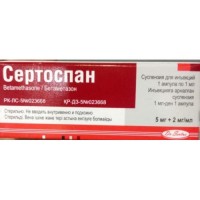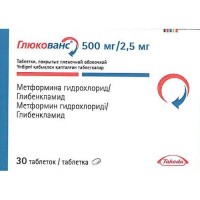Vipidiya 28's 25 mg film-coated tablets
- $63.50
Sku:
af4f5e77c3e1
The instruction for medical use of Vipidiya™ medicine This medicine is subject to additional monitoring. It will allow to reveal new information on safety quickly. We appeal to health care providers to report about any suspected undesirable reactions. A trade name of Vipidiya™ the International unlicensed name Alogliptin Lekarstvennaya the Tablet form, film coated 12.5 mg and 25 mg Structure One tablet contains active agent: an alogliptina benzoate of 17 mg (12.5 mg of an alogliptin are equivalent) and 34 mg (25 mg of an alogliptin are equivalent) excipients: Kernel: Mannitolum, cellulose microcrystalline, hydroxypropyl cellulose, sodium of a kroskarmelloz, magnesium stearate Structure of a film cover: the gipromelloza 2910, the titan dioxide (E 171), ferrous oxide yellow (E 172), ferrous oxide red (E 172), polyethyleneglycol 8000, blackened gray F1 the Description Oval biconvex tablets, film coated yellow color, with the inscription TAK and ALG-12.5 on one party of a tablet (for a dosage of 12.5 mg), Oval biconvex tablets, film coated light-red color, with the inscription TAK and ALG-25 on one party of a tablet (for a dosage of 25 mg). Pharmacotherapeutic group of Means for treatment of diabetes. Glucose-lowering drugs for oral administration. Inhibitors dipeptidilpeptidazy-4 (DPP-4). Alogliptin the ATX A10BH04 Code the Pharmacological Pharmacokinetics Pharmacokinetics properties of an alogliptin was studied in researches with participation of both healthy volunteers, and patients with diabetes 2 types. At healthy volunteers after single oral administration up to 800 mg of an alogliptin the fast absorption of drug with achievement of the maximum concentration in plasma is noted from one to two hours from the moment of reception (average Tmax). After reception of the maximum recommended therapeutic dose of drug (25 mg) the final elimination half-life (T1/2) averaged 21 hour. After multiple dose up to 400 mg within 14 days at patients with type 2 diabetes the minimum accumulation of an alogliptin with increase in the area under pharmacokinetic curve (AUC) and the maximum concentration in blood plasma (Cmax) for 34% and 9% respectively was observed. Both at single, and at multiple dose of an alogliptin of AUC and Cmax increase in proportion to increase in a dose from 25 mg to 400 mg. Coefficient of variation of AUC of an alogliptin among patients small (17%). Absorption the Absolute bioavailability of an alogliptin is about 100%. As at reception of an alogliptin together with food with the high content of fat the influence on AUC and Cmax was not revealed, the drug can be taken irrespective of meal. Distribution After single intravenous administration of an alogliptin in a dose of 12.5 mg at healthy volunteers the distribution volume in a terminal phase was 417 l that indicates what alogliptin is well distributed in fabrics. Communication with proteins of plasma makes 20%. Metabolism Alogliptin is not exposed to extensive metabolism therefore from 60% to 71% of the entered dose it is removed with urine in an invariable look. After oral introduction of a 14C-mechenny alogliptin two minor metabolites were defined: N-demetilirovanny alogliptin M-I (meny than 1% of initial substance) and N-acetylated alogliptin by M-II (˂ less than 6% of initial substance). M-I is the active metabolite and selection DPP-4 inhibitor similar in action with alogliptiny, M-II does not show the inhibiting activity in relation to DPP-4 or other DPP to similar enzymes. In the researches in vitro it was revealed that CYP2D6 and CYP3A4 promote limited metabolism of an alogliptin. Alogliptin exists mainly in the form of (R) - an enantiomer (& gt, more than 99%) and in the conditions of in vivo in insignificant quantities is exposed to chiral transformation to (S) - an enantiomer. (S) - the enantiomer is not found at reception of an alogliptin in therapeutic doses (25 mg). Removal After reception of a 14C-mechenny alogliptin, 76% of the general radioactivity is removed by kidneys and 13% − through intestines, reaching removal of 89% of the entered radioactive dose. The renal clearance of an alogliptin (9.6 l/h) indicates renal and canalicular secretion. The system clearance is 14.0 l/h. Pharmacokinetics at special groups of patients: A renal failure of AUC of an alogliptin at patients with impaired renal function of light severity (60klirens creatinine (CrCl) & lt, 90 ml/min.) increased approximately by 1.2 times. Increase in AUC of an alogliptin was approximately twice noted at patients with impaired renal function of moderate severity (30≤CrCl<, 60 ml/min.). About three - and quadruple increase in AUC of an alogliptin was noted at patients with a renal failure of heavy degree (15≤CrCl<, 30 ml/min.) and with an end-stage of chronic kidney disease (CrCl<, 15ml/mines or when dialysis is required) respectively. An abnormal liver function At patients from the liver of moderate severity broken by function (class B on a scale of Chayld-Pyyu) AUC and Cmax of an alogliptin decrease approximately by 10% and 8% respectively in comparison with healthy subjects. These values are clinically not significant. Patients with abnormal liver functions of heavy degree (I Drink class C on a scale of Chayld-) were not studied. Age, sex, race Advanced and senile age (65-81 years), a floor and race have no clinically significant effect on pharmacokinetic properties of an alogliptin. Patients of children's age Pharmacokinetics of an alogliptin at children and teenagers are younger than 18 years was not studied, any data are absent. A pharmacodynamics Use of a single dose of an alogliptin healthy faces led to the maximum inhibition of DPP-4 within two-three hours. The maximum inhibition of DPP-4 exceeded 93% in the range of doses from 12.5 mg to 800 mg. The inhibition of DPP-4 remained at the level of higher than 80% in 24 hours after reception of a dose higher or equal 25 mg. The maximum and general influence of glyukagonopodobny peptide-1 (GPP-1) for more than 24 hours was three-four times higher at an alogliptin (in doses of 25 - 200 mg), than at placebo. In the 16 weeks, double blind person, placebo - a controlled research alogliptin 25 mg showed lowering of levels of a postprandialny glucagon and increase in levels of postprandialny active GPP-1 in comparison with placebo throughout the eight-hour period after intake of the standardized food. It is unknown how these results belong to changes in the general glycemic control at patients with diabetes 2 types. In this research the use of an alogliptin of 25 mg showed lowering two-hour postprandialny glucose levels in comparison with placebo (-30mg/dl against 17mg/dl, respectively). Single dose of a daily dose (several single doses) of an alogliptin at patients with type 2 diabetes within 14 days, also led to the maximum inhibition of DPP-4 within one-two hours. The inhibition exceeded 93% for all doses of 25 mg, 100 mg and 400 mg. After 14 days of use of an alogliptin in these doses the inhibition of DPP-4 remained higher than 81% within 24 hours. Influence on electrophysiologic parameters of heart In randomized, placebo - a controlled research participated in four parallel groups 257 patients who received alogliptin 50 mg, alogliptin 400 mg, moxifloxacin of 400 mg or placebo for seven days once a day. Reception of any of doses of an alogliptin was not followed by increase in the corrected QTc interval. After reception of a dose of 400 mg the peak concentration of an alogliptin in blood plasma was 19 times higher, than peak concentration after reception of the maximum recommended therapeutic dose of 25 mg. Indications the Drug Vipidiya™ is shown in addition to a diet and physical exercises for improvement of glycemic control at adult patients with diabetes 2 types in the form of monotherapy and in a combination with other drugs. The route of administration and doses the Dosage of Vipidiya™ is issued in the form of the film coated tablets containing 25 mg and 12.5 mg of drug that allows to choose the optimum mode of dosing. The recommended dose is one tablet Випидия™ 25 of mg once a day. Special instructions on a dosage for separate groups of patients the Renal failure − for patients with a renal failure of light severity (60≤CrCl<, 90ml/mines), dose adjustment of the drug Vipidiya™ is not required − by the recommended drug Vipidiya™ dose for patients with a renal failure of moderate severity 30≤CrCl<, 60ml/mines) 12.5 mg are It is recommended to define indicators of function of kidneys before intake of this drug and also periodically in the course of treatment. Route of administration Oral administration. The drug Vipidiya™ should be taken irrespective of meal once a day. Tablets should be swallowed entirely and to wash down with water. In case the patient missed administration of drug of Vipidiya™, it has to accept it right after remembers the missed administration of drug. Let's not allow reception of a double dose of the drug Vipidiya™. Side effects As clinical trials were carried out under very differing conditions, there is no opportunity to carry out direct comparison of frequencies of the undesirable reactions observed in clinical trials of drug with the frequencies observed in clinical trials of other drugs and also such frequencies can not always reflect a situation of use of drug in practice. In the integrated analysis of 14 controlled clinical trials, the general frequency of adverse events was 73% at the patients receiving alogliptin 25 mg, 75% in group of placebo and 70% in group with other drug of comparison. In general the frequency of the termination of therapy because of undesirable reactions was 6.8% in group of an alogliptin of 25 mg, 8.4% in group of placebo or 6.2% to group with other active means of comparison. Messages about undesirable side reactions of the exceeding 4%, at patients who received alogliptin are registered: nasopharyngitis, headache, upper respiratory tract infections. The following side reactions are described in the section Special Instructions: - Pancreatitis - Reactions of hypersensitivity - Influence on a liver - the Arthralgia the Hypoglycemia Cases of a hypoglycemia were registered on the basis of values of level of glucose in blood and/or clinical signs and symptoms of a hypoglycemia. In a monotherapy research the frequency of a hypoglycemia was observed at 1.5% and 1.6% of patients in groups of an alogliptin and placebo respectively. Use of an alogliptin as addition to therapy of Glyburidum or insulin do not increase the frequency of development of a hypoglycemia in comparison with placebo. In a research of monotherapy, comparing alogliptin to sulphonylurea drugs at patients of advanced age, the frequency of development of a hypoglycemia was 5.4% and 26% in groups of an alogliptin and glipizid. Post-marketing experience In the course of post-marketing use of an alogliptin the following side reactions - hypersensitivity (anaphylaxis, a Quincke's edema, rash, urticaria), heavy skin side reactions (including Stephens-Johnson's syndrome), increase in level of liver enzymes, a fulminantny liver failure, the heavy and leading to an invalidization arthralgia both acute pancreatitis, diarrhea, constipations, nausea, and intestinal impassability were revealed. As these side reactions were reported voluntarily in population of the uncertain size, it is not possible to estimate authentically their frequency therefore frequency is classified as the unknown. Contraindications − hypersensitivity to an alogliptin or to any excipient − existence in the anamnesis of heavy reactions of hypersensitivity, including anaphylactic reaction, an acute anaphylaxis and a Quincke's disease, to any inhibitor dipeptidilpeptidazy-4 − diabetes of 1 type − an acute or chronic metabolic acidosis, including diabetic ketoacidosis (diabetic ketoacidosis it is necessary to treat insulin) − patients with abnormal liver functions of heavy degree (class C on a scale of Chayld-Pyyu) were not studied therefore prescribing of the drug Vipidiya™ is not recommended to such patients − renal failures of heavy degree (15≤CrCl<, 30ml/mines) or with an end-stage of chronic kidney disease (CrCl<, 15ml/mines or when dialysis is required) − age up to 18 years − pregnancy Medicinal interactions Vipidiyatm, is generally brought from an organism by kidneys and only in insignificant degree is metabolized by the fermental system of P450 cytochrome (CYP). During the researches any considerable interaction with substrates or inhibitors of cytochrome or with other means which are brought out of an organism through kidneys was not revealed. Assessment of medicinal interactions of in vitro of the Research in vitro assume what alogliptin does not induce CYP1A2, CYP2B6, CYP2C9, CYP2C19 and CYP3A4 and also does not inhibit CYP1A2, CYP2C8, CYP2C9, CYP2C19, CYP3A4 and CYP2D6 in clinically significant concentration. Assessment of medicinal interactions of in Vivo Influence of an alogliptin on other medicines during clinical trials was not revealed influences of an alogliptin on pharmacokinetic parameters of drugs which are metabolized by isoenzymes of CYP or are removed in an invariable look. On the basis of results of the described pharmacokinetic researches the correction of a dose of Vipidia ™ is not recommended. Effect of other medicines on pharmacokinetics of an alogliptin clinically significant changes in pharmacokinetics at use of an alogliptin along with metformin, Cimetidinum gemfibrozily (CYP2C8/9), pioglitazony (CYP2C8), fluconazole (CYP2C9), ketokonazoly (CYP3A4), atorvastatiny (CYP3A4), cyclosporine, digoxin were not observed. The special indications Pancreatitis Later of an initiation of treatment the drug Vipidiya™, at patients it is necessary to conduct attentive observation regarding symptoms and symptoms of pancreatitis. If pancreatitis is suspected, it is necessary to cancel immediately Vipidiya™ and to appoint the corresponding treatment. There are no data whether patients with pancreatitis history have the increased risk of developing pancreatitis when using Vipidiya™. Reactions of hypersensitivity came messages about serious hypersensitivity reactions at the patients receiving Vipidiya™ To the post-marketing period. These reactions include anaphylactic reactions, a Quincke's disease and exfoliative skin reactions, such as Stephens-Johnson's syndrome If suspicions on serious hypersensitivity reaction appear, it is necessary to suspend drug Vipidiya™ use, to carry out the assessment of other potential reasons of the appeared complication and to appoint alternative treatment of diabetes. Drug needs to be used with care at the patients having in the anamnesis a Quincke's disease to others DPP-4 inhibitors as it is unknown whether such patients can be predisposed to a Quincke's disease at drug Vipidiya™ use. Influence on a liver In post-marketing reports cases of a liver failure with fatal and not fatal outcomes at the patients taking the drug Vipidiya™ were reported though they contain not enough information, a probable cause, necessary for establishment. During glycemic control at patients it was observed increases in serumal alaninaminotranspherase (ALT) to level which in more than exceeded the upper limit of range of normal values (ULRNV) three times: 1.3% of the patients receiving alogliptin and 1.7% of the patients receiving all other drugs of comparison. It is necessary to carry out analyses of function of a liver at patients at whom symptoms which can indicate injury of a liver, including fatigue, anorexia, discomfort in upper right area of a stomach, darkening of urine or jaundice are noted. If clinically substantial increases of liver enzymes are found in the patient and if deviations in results of analyses of function of a liver remain resistant or worsen, it is necessary to stop use of the drug Vipidiya™ and to perform examination for the purpose of establishment of their probable cause. At such patients it is impossible to resume use of the drug Vipidiya™ without receiving other explanation of deviations in results of analyses of function of a liver. The combined reception with other glucose-lowering drugs and risk of a hypoglycemia It is known that insulin and sekretogena of insulin, such as sulphonylurea derivatives, call gipoglik
Mia. Thus, lower dose of insulin or sekretogen of insulin can be required to minimize risk of a hypoglycemia when using in combination with the drug Vipidiya™. An arthralgia post-marketing cases of articulate pains at the patients accepting inhibitors dipeptidilpeptidazy-4 (DPP-4) Were registered. Time of the beginning of symptoms of an arthralgia after the beginning of medicinal therapy, fluctuated from one day to several years. At appearance of serious and constant joint pains, it is necessary to consider inhibitor use dipeptidilpeptidazy-4 (DPP-4) as the possible cause of severe pain joints and to stop reception drug if it is necessary. Macrovascular results In clinical trials the final and convincing evidence of lowering of macrovascular risk at use of the drug Vipidiya™ or any other antidiabetic drug was not obtained. Placebo - a controlled research on definition of cardiovascular outcomes ('EXAMINE') at 5,380 patients was carried out randomized, double blind. In test compared risk of considerable cardiovascular complications between alogliptiny and placebo at their addition to standard therapy of diabetes and an atherosclerotic vascular disease. The research included patients who had an insufficient glycemic control at the initial level and who were hospitalized because of complications of a sharp coronary syndrome (for example, the acute myocardial infarction or unstable stenocardia demanding hospitalization) within 15 - 90 days before randomization. Average age of patients was 61 years, and patients had the diagnosis 'diabetes of the 2nd type' within about 9 years, 87% transferred a myocardial infarction, and average HbA1 8,0 value of % earlier. The research showed what aloglintin does not increase risk of considerable cardiovascular complications in comparison with placebo. In group of an aloglipn at 11.3% of patients the risk of considerable cardiovascular complications in comparison with 11.8% of patients in group of placebo was observed. Use for special groups of patients Reproductive function Limited data on use of Vipidiya™ for pregnant women are insufficient for determination of the risk of major congenital defects or an abortion associated with drug. There are risks for mother and a fruit associated with badly controlled diabetes during pregnancy. As a precautionary measure it is preferable to avoid use of an aloglintin during pregnancy. Badly controlled diabetes during pregnancy increases at mothers risk of diabetic ketoacidosis, a preeclampsia, spontaneous abortion, premature births, a still birth and complications at childbirth. Badly controlled diabetes increases risk for a fruit of major congenital defects, a still birth and the incidence connected with a macrosomia. Penetration of an alogliptin through a placenta and hit in a fruit after oral introduction at pregnant rats was observed. The lactation period In researches, it was shown what alogliptin, gets into breast milk at the rats who are carrying out breastfeeding in the ratio 2:1 to plasma concentration. It is unknown of a possibility of penetration of an alogliptin into breast milk at the person. It is impossible to exclude risk for the child who is on breastfeeding. Випидия™ it is necessary to apply with care at the women who are carrying out breastfeeding. It is necessary to take into account advantage of breastfeeding for development and health together by clinical need of mother for the drug Vipidiya™ and also any potential undesirable effects of Vipidiya™ on the babies receiving breastfeeding or the main condition (disease) of mother. Patients of children's age Safety and efficiency of use of the drug Vipidiya™ for children and teenagers are younger than 18 years are not established. Any data on use of the drug Vipidiya™ at this category of patients are absent. Elderly patients (≥ 65 years): Among all patients (N=9052) participating in clinical trials of safety and efficiency of an alogliptin, 2257 (24.9%) of the patient were age of 65 years and is more senior and 386 (4.3%) the patient was age of 75 years and is more senior. In general, differences in safety and efficiency between patients age of 65 years were not observed and is more senior also patients of younger age. Though in this clinical experience of use of drug differences in treatment response between elderly patients and patients of younger age were also not revealed, nevertheless it is impossible to exclude higher sensitivity at some elderly people. Feature of influence of medicine on ability to run the vehicle or potentially dangerous mechanisms the Drug Vipidiya™ has no significant impact on ability to drive the car and other mechanisms. Nevertheless, it is necessary to warn patients about risk of development of a hypoglycemia, especially when using drug in combination with derivative sulphonylurea, insulin, or in a combination with thiazlolidinedithis and metformin. Overdose the Maximum doses of an alogliptin in clinical trials made 800 mg once at healthy volunteers and 400 mg of 1 times a day for 14 days at patients with diabetes 2 types that in 32 and 16 times respectively exceeds most recommended therapeutic dose of 25 mg. At use of these doses no serious undesirable reactions were observed. In case of overdose it is reasonable to remove with the drug Vipidiya™ not absorbed substance from digestive tract and to provide necessary medical observation and also symptomatic therapy. In 3 hours of a hemodialysis it is possible to remove about 7% of an alogliptin. Thus, the expediency of a hemodialysis at overdose is improbable. Data on removal of an alogliptin by peritoneal dialysis are absent. The form of release and packing On 14 tablets place in blister strip packaging from aluminum foil. On 2 planimetric packs together with the instruction for medical use in the state and Russian languages put in a pack cardboard. To Store storage conditions at a temperature not over 25 ºС. To store out of children's reach! 3 years not to apply a period of storage after the expiration date specified on packing. Prescription status According to the prescription of Proizvoditel Takeda Ayland Limited, Ireland the Name and the country of the owner of the registration certificate Takeda Pharmasyyutikals of the USA, INK., the USA the Name and the country of the Takeda Ayland Limited organization packer, Ireland
to Develop the Address of the organization accepting in the territory of the Republic of Kazakhstan claims from consumers on quality of the products (goods) and responsible for post-registration observation of safety of medicine of Takeda Kazakhstan LLP Almaty, Shashkin St. 44
Mia. Thus, lower dose of insulin or sekretogen of insulin can be required to minimize risk of a hypoglycemia when using in combination with the drug Vipidiya™. An arthralgia post-marketing cases of articulate pains at the patients accepting inhibitors dipeptidilpeptidazy-4 (DPP-4) Were registered. Time of the beginning of symptoms of an arthralgia after the beginning of medicinal therapy, fluctuated from one day to several years. At appearance of serious and constant joint pains, it is necessary to consider inhibitor use dipeptidilpeptidazy-4 (DPP-4) as the possible cause of severe pain joints and to stop reception drug if it is necessary. Macrovascular results In clinical trials the final and convincing evidence of lowering of macrovascular risk at use of the drug Vipidiya™ or any other antidiabetic drug was not obtained. Placebo - a controlled research on definition of cardiovascular outcomes ('EXAMINE') at 5,380 patients was carried out randomized, double blind. In test compared risk of considerable cardiovascular complications between alogliptiny and placebo at their addition to standard therapy of diabetes and an atherosclerotic vascular disease. The research included patients who had an insufficient glycemic control at the initial level and who were hospitalized because of complications of a sharp coronary syndrome (for example, the acute myocardial infarction or unstable stenocardia demanding hospitalization) within 15 - 90 days before randomization. Average age of patients was 61 years, and patients had the diagnosis 'diabetes of the 2nd type' within about 9 years, 87% transferred a myocardial infarction, and average HbA1 8,0 value of % earlier. The research showed what aloglintin does not increase risk of considerable cardiovascular complications in comparison with placebo. In group of an aloglipn at 11.3% of patients the risk of considerable cardiovascular complications in comparison with 11.8% of patients in group of placebo was observed. Use for special groups of patients Reproductive function Limited data on use of Vipidiya™ for pregnant women are insufficient for determination of the risk of major congenital defects or an abortion associated with drug. There are risks for mother and a fruit associated with badly controlled diabetes during pregnancy. As a precautionary measure it is preferable to avoid use of an aloglintin during pregnancy. Badly controlled diabetes during pregnancy increases at mothers risk of diabetic ketoacidosis, a preeclampsia, spontaneous abortion, premature births, a still birth and complications at childbirth. Badly controlled diabetes increases risk for a fruit of major congenital defects, a still birth and the incidence connected with a macrosomia. Penetration of an alogliptin through a placenta and hit in a fruit after oral introduction at pregnant rats was observed. The lactation period In researches, it was shown what alogliptin, gets into breast milk at the rats who are carrying out breastfeeding in the ratio 2:1 to plasma concentration. It is unknown of a possibility of penetration of an alogliptin into breast milk at the person. It is impossible to exclude risk for the child who is on breastfeeding. Випидия™ it is necessary to apply with care at the women who are carrying out breastfeeding. It is necessary to take into account advantage of breastfeeding for development and health together by clinical need of mother for the drug Vipidiya™ and also any potential undesirable effects of Vipidiya™ on the babies receiving breastfeeding or the main condition (disease) of mother. Patients of children's age Safety and efficiency of use of the drug Vipidiya™ for children and teenagers are younger than 18 years are not established. Any data on use of the drug Vipidiya™ at this category of patients are absent. Elderly patients (≥ 65 years): Among all patients (N=9052) participating in clinical trials of safety and efficiency of an alogliptin, 2257 (24.9%) of the patient were age of 65 years and is more senior and 386 (4.3%) the patient was age of 75 years and is more senior. In general, differences in safety and efficiency between patients age of 65 years were not observed and is more senior also patients of younger age. Though in this clinical experience of use of drug differences in treatment response between elderly patients and patients of younger age were also not revealed, nevertheless it is impossible to exclude higher sensitivity at some elderly people. Feature of influence of medicine on ability to run the vehicle or potentially dangerous mechanisms the Drug Vipidiya™ has no significant impact on ability to drive the car and other mechanisms. Nevertheless, it is necessary to warn patients about risk of development of a hypoglycemia, especially when using drug in combination with derivative sulphonylurea, insulin, or in a combination with thiazlolidinedithis and metformin. Overdose the Maximum doses of an alogliptin in clinical trials made 800 mg once at healthy volunteers and 400 mg of 1 times a day for 14 days at patients with diabetes 2 types that in 32 and 16 times respectively exceeds most recommended therapeutic dose of 25 mg. At use of these doses no serious undesirable reactions were observed. In case of overdose it is reasonable to remove with the drug Vipidiya™ not absorbed substance from digestive tract and to provide necessary medical observation and also symptomatic therapy. In 3 hours of a hemodialysis it is possible to remove about 7% of an alogliptin. Thus, the expediency of a hemodialysis at overdose is improbable. Data on removal of an alogliptin by peritoneal dialysis are absent. The form of release and packing On 14 tablets place in blister strip packaging from aluminum foil. On 2 planimetric packs together with the instruction for medical use in the state and Russian languages put in a pack cardboard. To Store storage conditions at a temperature not over 25 ºС. To store out of children's reach! 3 years not to apply a period of storage after the expiration date specified on packing. Prescription status According to the prescription of Proizvoditel Takeda Ayland Limited, Ireland the Name and the country of the owner of the registration certificate Takeda Pharmasyyutikals of the USA, INK., the USA the Name and the country of the Takeda Ayland Limited organization packer, Ireland
to Develop the Address of the organization accepting in the territory of the Republic of Kazakhstan claims from consumers on quality of the products (goods) and responsible for post-registration observation of safety of medicine of Takeda Kazakhstan LLP Almaty, Shashkin St. 44
